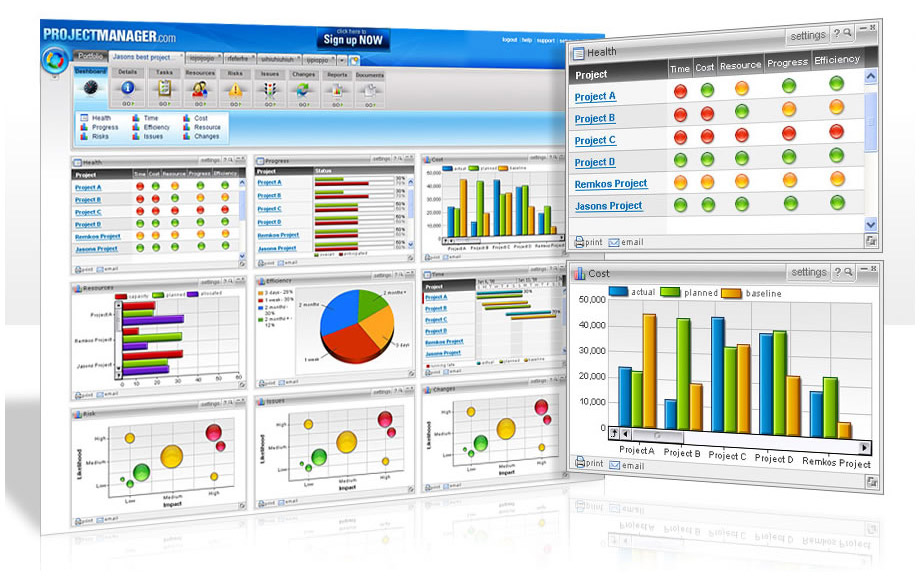– a case for project metrics. The right metric, driving the right behavior aligned with the right strategy.
Think of the last project or program you managed, or the portfolio of projects or programs in your PMO. How successful are they? How much value are they generating for the company? How are they performing against plan? How well positioned are they to enable execution of your strategy?
If you know the answers to each of these questions and you have a way to capture and report on them, then you know that project metrics and dashboarding is vital to answering these questions.
Metrics are intended to measure performance, ensuring that what we measure is on track to perform as we expected or enabling us to detect abnormalities and course-correct if necessary. They allow the PMO team to assess the health of a portfolio at a glance; they allow the PM to get actionable input on where their efforts are most needed, and the project sponsor to see how well the project is delivering on their charter.
So why, if all the above is true, are metrics getting such a bad reputation? Why do we dismiss the idea of running our projects, programs or portfolios based on metrics? The answer for most of us is that metric scare us, confuse us, or make us think of wasting time managing something that no one understands or cares about.
 Source: www.ProjectManager.com
Source: www.ProjectManager.com
According to a recent 2011 report by the Standish Group there is a “marked increase in project success rates from 2008 to 2010[1]”, suggesting that the increase is caused by a couple of identifiable factors “One of the major features of the CHAOS Manifesto is the Size-Complexity Matrix. The Size-Complexity Matrix provides a guideline for categorizing a project in order to assess the risk and effort required for it,2” says Jim Crear, Standish Group CIO, “For example the Size-Complexity Matrix can be used to decide if an executive sponsor can take on the project or any additional projects. It also could be used to determine the workload of the project manager or to alert management as to the risk of a specific project or portfolio of projects.3“
Clearly, project metrics are key to ensuring that decisions are made based on facts derived from metrics. The key to success in enabling metrics that drive impactful metrics however is asking the right questions up front and ensuring that what you measure helps you answer those questions.
Jim Johnson, chairman of The Standish Group, also indicates that “We clearly are entering a new understanding of why projects succeed or fail4“, which suggests that as the strategy to monitor projects through metrics matures a PMO, PM or stakeholder will see an increase in likelihood of project success, if the right questions are asked, progress towards those questions are measure and appropriate action is taken.
So, are you ready to dig a little deeper into your metrics framework strategy? Ready to refine, ready to create, ready to change your mind on the relevance of metrics? In the following posts I will share insights on:
- Risk and Benefits of a metrics strategy
- Powerful metrics that drive the desired behavior & a roadmap for helping you identify metrics that get you started
- How metrics can help enable you link strategy to execution

I can think of another possible reason for the results of the Standish Group report. Projects have been failing less the past few years because, with the economy in a rut, projects that don’t get enough support to succeed have been axed. Companies have cutg all non-essential personnel and projects and only kept the critical ones going. And for those projects, they put their best and most experienced PMs to work to improve the chance of staying in business.
What do you think?